A well-organized pantry is a game-changer in a home. It makes meal prep more efficient, saves time, and reduces stress. However, if you have deep shelves in your pantry, keeping it organized can be a frustrating. Items can easily get lost in the back, and it can be challenging to maximize the space available. We’re going to show you how deep pantry organization is attainable and how you get get there.
We’ve organized a number of pantries with deep shelves and know what works and what doesn’t. We’re sharing with you our tips and tricks to transform your pantry into something that is not only functional but beautiful too. From creating zones to using containers, we’ll cover everything you need to know to keep your pantry organized and clutter-free.
Let’s do this.
Affiliate Disclosure:
We want to be transparent and inform our users that some of the links on this website are affiliate links. This means that if you make a purchase through these links, we may earn a commission, at no additional cost to you. We only recommend products or services that we believe will add value to our readers. Your support through these affiliate links helps us maintain and improve our content. Thank you for your support!
DEEP PANTRY ORGANIZATION
1. Understanding Your Pantry Layout and Storage Capacity
Before you start organizing your pantry, it’s essential to understand its layout and storage capacity. Take some time to measure your shelves and note their depths, heights, and widths. This information will help you choose the right storage containers and organizers that fit your pantry space.
Additionally, consider the location of your pantry. Is it in a high-traffic area, or is it tucked away in a corner?
Understanding your pantry’s location will help you prioritize and organize items based on their frequency of use.
For example, if your pantry is in a high-traffic area, you may want to keep snacks and easy-to-grab items at eye level, while less frequently used items can be stored on higher or lower shelves.
2. Sorting and Decluttering Your Pantry
The first step in organizing any space is to declutter and sort through items. Start by emptying your pantry shelves and grouping similar items together.
Then, take a look at each item and ask yourself if you really need it. Consider expiration dates, the frequency of use, and whether or not the item brings value to your life.
Discard any expired or stale items, donate unopened items you won’t use, and recycle or repurpose packaging whenever possible.
Once you’ve decluttered, you’ll have a better idea of what items you need to store, and you can move on to choosing the right storage containers and organizers.
3. Choosing The Right Storage Containers and Organizers
When it comes to organizing a pantry with deep shelves, choosing the right storage containers and organizers is key. Look for containers that are clear, stackable, and have airtight lids to keep food fresh and visible.
Square and rectangular containers are ideal for deep shelves because they maximize space and fit together neatly. Consider investing in airtight containers for items such as flour, sugar, pasta, and cereal.
For smaller items such as spices, tea bags, and snacks, opt for clear bins or baskets that can be easily pulled out and accessed. Additionally, consider using shelf risers, turntables, and hooks to maximize vertical space and make items more accessible.
4. Maximizing Space with Shelf Risers, Turntables, and Hooks
When it comes to organizing a pantry with deep shelves, it’s essential to make the most of vertical space. Shelf risers are an excellent way to create additional levels and increase storage capacity. They’re perfect for storing canned goods, jars, and bottles.
Turntables are another great organizational tool for deep shelves. They make it easy to access items that would otherwise be difficult to reach at the back of the shelf. Use them for spices, oils, vinegar, and other small items. Hooks are also a useful tool for maximizing space in a pantry. Use them to hang measuring cups, spoons, and other utensils.
5. Creating a Labeling System For Your Pantry Items
A labeling system is essential for maintaining an organized pantry. Labels make it easy to find what you need quickly and keep items in their designated spots.
Use a label maker or printable labels to create uniform and easy-to-read labels. Be sure to label both the front and top of containers for easy identification.
Consider adding expiration dates to labels for perishable items such as baking powder, spices, and oils. Additionally, use labels to indicate which items need to be used first, based on expiration dates or frequency of use.
6. Arranging Your Pantry By Category and Frequency of Use
Once you’ve chosen the right containers and organizers and created a labeling system, it’s time to arrange your pantry. Group similar items together by category, such as baking supplies, snacks, canned goods, and pasta. Then, arrange items within each category based on frequency of use.
Keep frequently used items at eye level for easy access and less frequently used items on higher or lower shelves. Additionally, consider creating zones within your pantry based on meal categories such as breakfast, lunch, and dinner. This will make it easier to plan meals and create grocery lists.
MAINTAINING AN ORGANIZED PANTRY
Maintaining an organized pantry is an ongoing process. It’s essential to regularly declutter, wipe down shelves, and check expiration dates. Make it a habit to do a quick scan of your pantry before grocery shopping to avoid purchasing duplicate items.
Additionally, consider doing a deep clean and reorganization every few months to ensure that your pantry stays organized and clutter-free.
DEEP PANTRY ORGANIZATION EXAMPLES
Before: A cluttered pantry with items stacked haphazardly on deep shelves.
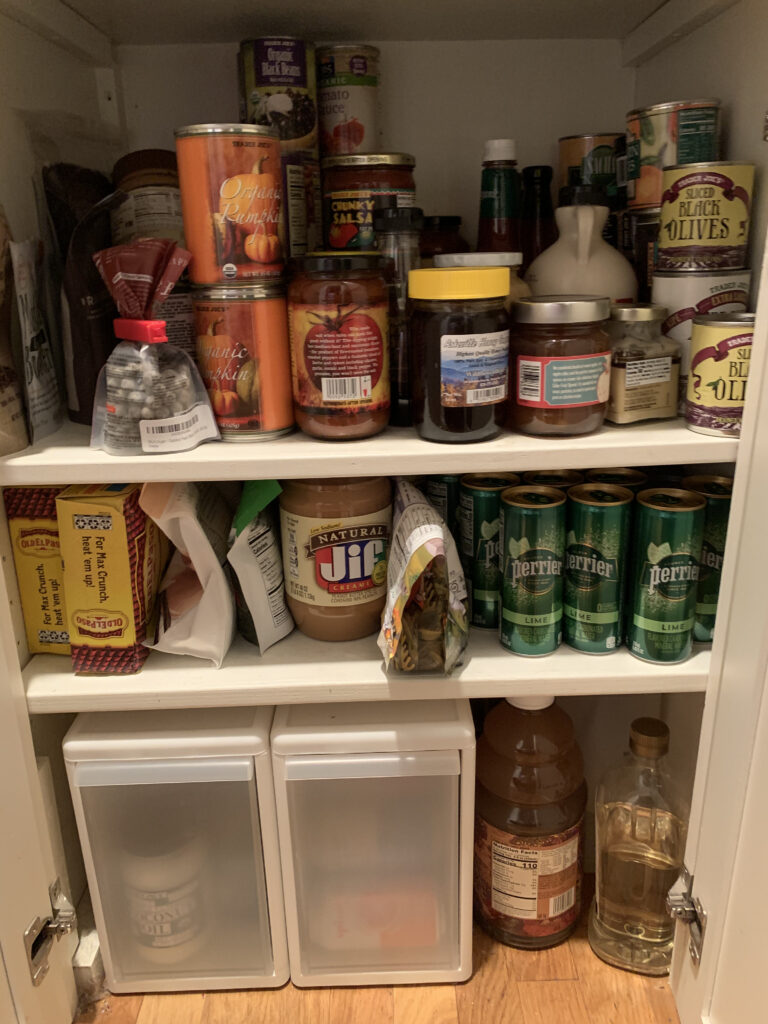 After: A well-organized pantry with clear containers, labels, and drawers.
After: A well-organized pantry with clear containers, labels, and drawers.
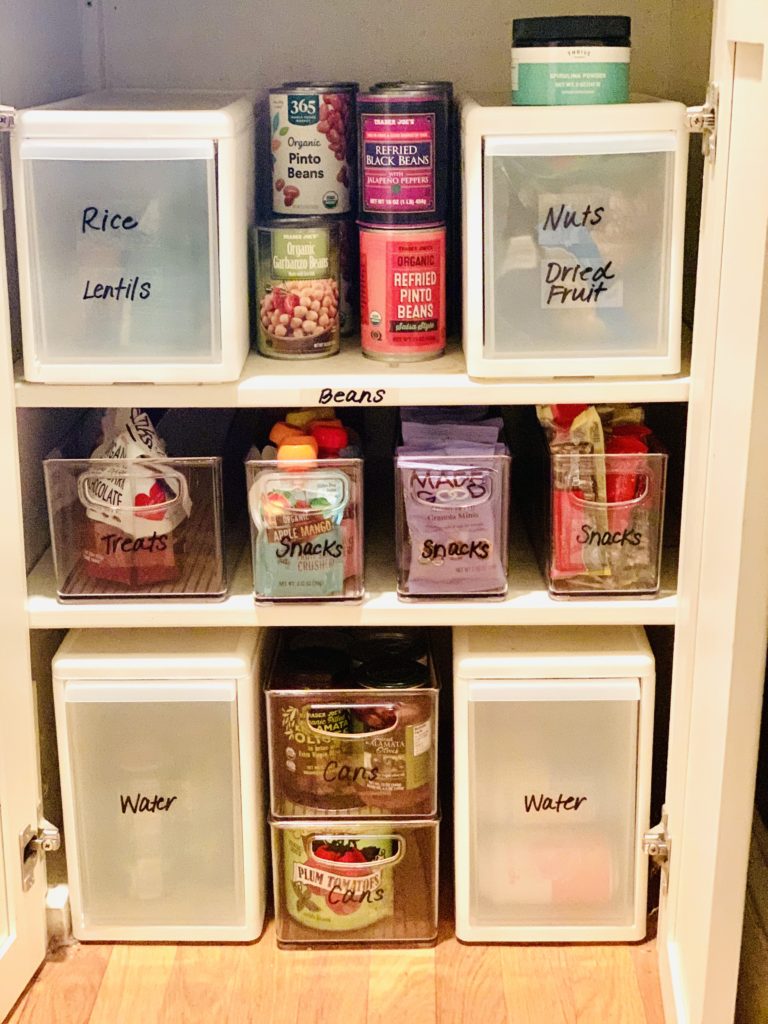
Before: A disorganized pantry with expired items and duplicate purchases.

After: A decluttered pantry with a labeling system and turntables for easy access.
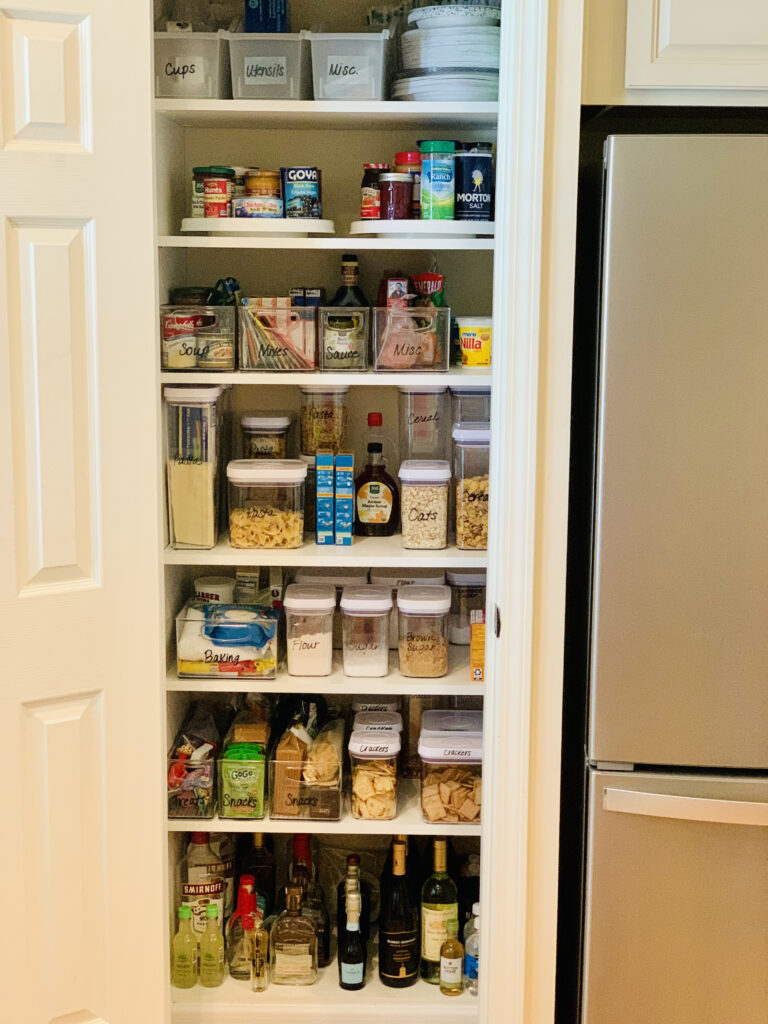
Before: A pantry with items grouped by category but no clear organization within each category.
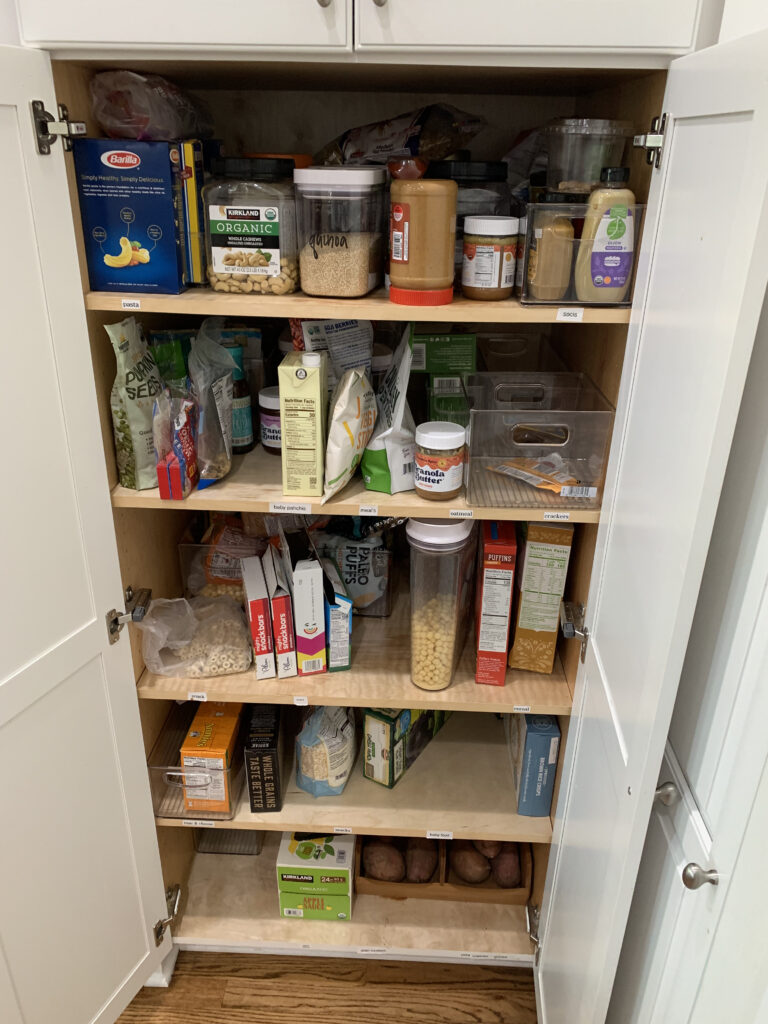
After: A pantry with items arranged by frequency of use, creating easy access to frequently used items.
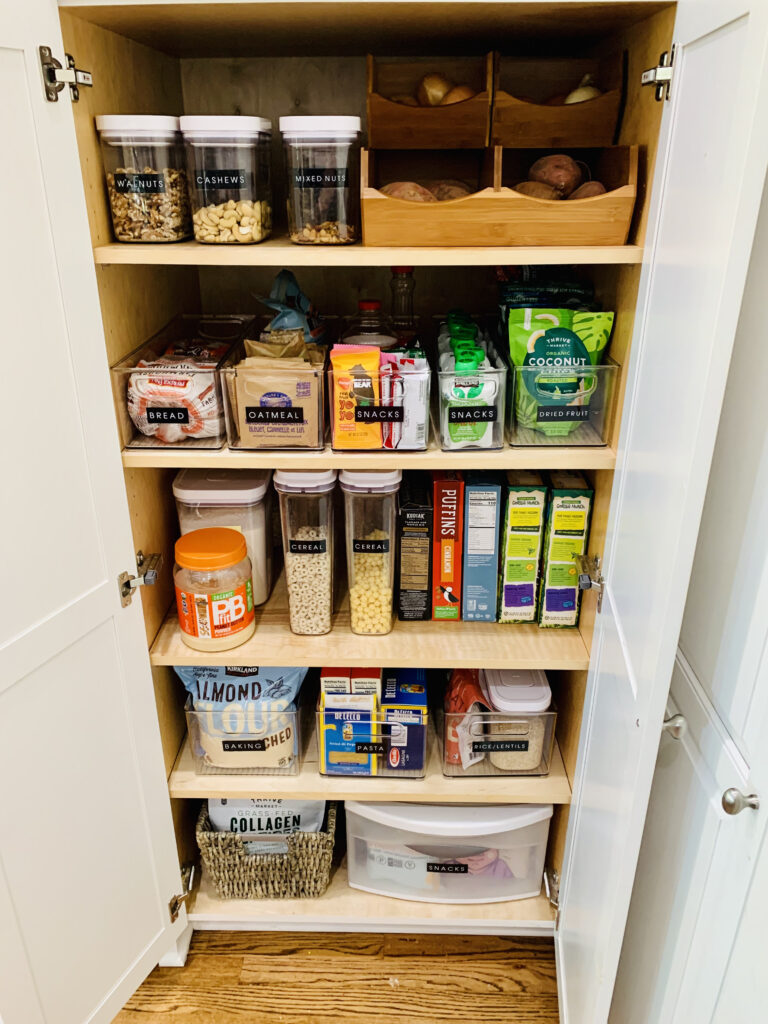
PRODUCT RECOMMENDATIONS
FINAL THOUGHTS
How to organize a pantry with deep shelves can seem like a daunting task, but with the right tools and organization system, it’s possible to create a functional and beautiful space.
Remember to understand your pantry’s layout and storage capacity, declutter and sort through items, choose the right storage containers and organizers, maximize space with shelf risers, turntables, and hooks, create a labeling system, arrange items by category and frequency of use, and maintain your organized pantry regularly.
With these tips in mind, you’ll be well on your way to a pantry that makes life easier and more enjoyable.
+ show Comments
- Hide Comments
add a comment